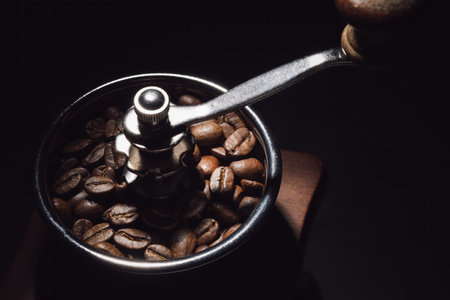1. The Rise of Sustainable Coffee Culture in the U.S.
Over the past few years, more and more Americans have started to care about how their daily coffee habits affect the environment. With climate change and plastic waste making headlines, coffee lovers across the country are rethinking not just where their beans come from but also how they brew at home. This shift is about more than just taste—its about making choices that are better for the planet.
Why Sustainability Matters in Home Coffee Brewing
Every cup of coffee you make at home has an environmental impact. From single-use pods to paper filters and electricity-hungry machines, the way you brew can add up. Many people are now looking for ways to reduce waste and save energy while still enjoying great coffee every day. Sustainable brewing methods help minimize landfill waste, lower carbon footprints, and often use fewer resources overall.
Eco-Friendly Brewing Methods: A Quick Comparison
| Brewing Method | Main Materials Used | Waste Produced | Energy Usage | Sustainability Score* |
|---|---|---|---|---|
| Single-Serve Pod Machines (e.g., Keurig) | Plastic/Aluminum Pods | High (Non-recyclable pods) | Medium-High | Low |
| Drip Coffee Maker (with Paper Filters) | Paper Filters, Plastic/Metal Machine | Medium (Used filters & grounds) | Medium | Medium |
| French Press | Glass/Steel Press, Reusable Filter | Low (Coffee grounds only) | Low (No electricity needed for press itself) | High |
| Pourover (Reusable Metal Filter) | Ceramic/Glass, Metal Filter | Very Low (Just coffee grounds) | Low-Medium (Heating water) | High |
*Sustainability score based on waste produced, materials used, and energy consumption.
The French Press: A Green Standout
The French press stands out as one of the most sustainable options for home brewers in the U.S. It doesn’t need single-use filters or plastic pods, and it’s built to last for years with minimal maintenance. Plus, all you need are quality coffee grounds and hot water—no fancy gadgets required! By making small changes like switching to a French press, American coffee drinkers are showing that a greener cup is possible without giving up flavor or convenience.
2. What Makes the French Press Eco-Friendly?
The Smart, Simple Design
The French press stands out for its straightforward design. It’s made up of just a few parts: a glass or stainless steel carafe, a metal plunger, and a reusable mesh filter. This simple setup means there’s nothing to throw away after each brew—no disposable filters or plastic pods, just your coffee grounds and water.
Minimal Waste Compared to Other Brewers
Many popular coffee makers rely on single-use paper filters or even plastic pods that head straight for the landfill. The French press changes that game by using a metal mesh filter you never need to replace. When you’re done brewing, all you have left are coffee grounds, which can be easily composted or used in your garden.
French Press vs. Other Coffee Brewers: Waste Comparison
| Coffee Maker Type | Disposable Filters/Pods | Reusable Parts | Main Waste Produced |
|---|---|---|---|
| French Press | No | Yes (Mesh Filter) | Coffee Grounds Only |
| Drip Coffee Maker | Yes (Paper Filters) | No | Filters + Coffee Grounds |
| K-Cup/Pod Machine | Yes (Plastic Pods) | No | Plastic Pods + Coffee Grounds |
| AeroPress | Yes (Small Paper Disks) | Yes (Plunger) | Papers + Coffee Grounds |
Energy Efficiency at Home
The French press doesn’t plug in or use electricity itself. All it needs is hot water, which you can heat on the stove or with an electric kettle—both more energy-efficient than running a drip machine for hours. There’s no pre-heating, no standby mode, and no wasted energy after your coffee is ready. It’s a simple way to cut down on your home’s overall energy use without sacrificing your morning cup.

3. Reducing Your Carbon Footprint With Every Cup
Making coffee at home is a daily ritual for many Americans, but did you know that your choice of brewing method can have a big impact on the environment? Let’s break down how using a French press can help lower your carbon footprint compared to popular alternatives like single-use pods and drip coffee makers.
Energy Consumption: Less Is More
The French press is refreshingly simple. There are no buttons, screens, or fancy electronics—just hot water, ground coffee, and a plunger. This means you only use energy to heat the water (which you can do with a kettle on the stove or an electric kettle). In contrast, drip machines and pod brewers often use extra power to keep coffee warm on hot plates or to run electronic components.
| Brewing Method | Energy Used per Cup | Extra Energy Features |
|---|---|---|
| French Press | Low (heating water only) | No standby mode, no warming plate |
| Drip Machine | Medium-High | Keeps coffee warm, uses electricity throughout brewing process |
| Single-Use Pod Machine | High | Powers up for each cup, electronic components always on standby |
Waste: Ditching Single-Use Plastics
If you’ve ever used a pod machine, you know how quickly those little plastic pods add up in the trash. Even though some companies offer recycling programs, most pods end up in landfills. Drip machines require paper filters and often waste coffee if you brew more than you drink. The French press stands out because it generates almost zero waste: just compostable coffee grounds and no need for disposable filters or pods.
| Brewing Method | Main Waste Produced | Reusability/Compostability |
|---|---|---|
| French Press | Coffee grounds only | Compostable; no disposables needed |
| Drip Machine | Coffee grounds + paper filters | Coffee grounds are compostable; filters sometimes are not |
| Single-Use Pod Machine | Plastic/aluminum pods + coffee grounds inside pods | Poor; most pods not recycled or composted easily |
A Greener Way to Brew at Home
The French press makes it easy to enjoy great-tasting coffee without all the extra waste and energy use that come with other methods. By switching to this classic brewing tool, you’re making a small but meaningful step toward a more sustainable coffee habit—right from your own kitchen.
4. Tips for a Greener French Press Routine
Choose Ethically Sourced Coffee
Start with coffee that’s good for the planet and for people. Look for beans that are certified Fair Trade, Rainforest Alliance, or Organic. These labels mean your coffee was grown in ways that respect both the environment and the farmers.
| Certification | What It Means |
|---|---|
| Fair Trade | Supports fair wages and safe conditions for farmers |
| Rainforest Alliance | Protects wildlife and natural resources |
| Organic | No harmful pesticides or synthetic fertilizers used |
Buy Local and in Bulk When Possible
If you can, support local roasters. This cuts down on shipping emissions and often means fresher beans. Buying in bulk also reduces packaging waste—just bring your own container to the shop!
Compost Your Coffee Grounds
After brewing, don’t toss those coffee grounds in the trash. Used grounds make excellent compost material, adding valuable nutrients to your garden or houseplants.
| How to Use Coffee Grounds | Benefits |
|---|---|
| Add to compost bin | Enriches soil with nitrogen |
| Sprinkle around plants | Keeps pests away & improves soil texture |
| DIY cleaning scrub | Abrasive texture helps clean pots and pans naturally |
Maintain Your French Press for Longevity
A well-cared-for French press lasts years, cutting down on waste from broken or cheap brewers. Clean all parts after each use, avoid harsh chemicals, and replace just the mesh filter if it wears out instead of buying a whole new press.
Quick Maintenance Tips:
- Rinse immediately after use to prevent buildup.
- Use mild soap and soft sponges—no abrasive pads.
- Check the plunger and filter regularly for wear.
- If needed, replace only small parts instead of tossing the whole thing.
Skip Paper Filters and Single-Use Plastics
The beauty of a French press is you don’t need disposable filters or pods. Just use your favorite ground coffee—no extra waste required!
Your Greener Brew Starts at Home
With these simple tips, your daily coffee ritual can be delicious and environmentally friendly—one cup at a time.
5. Embracing Sustainability: The Community Impact
Across the United States, more and more communities are coming together to make coffee drinking at home more sustainable. By choosing methods like the French press and adopting other eco-friendly habits, Americans are building a broader culture that cares about the planet. Let’s take a look at how different neighborhoods, local cafés, and even college campuses are making a difference.
Coffee Collectives Leading the Way
In cities like Portland, Oregon, and Boulder, Colorado, community-led coffee collectives have become powerful examples of how small changes can lead to big results. These groups promote using reusable filters with French presses, organizing mug swap events, and hosting workshops on composting used coffee grounds. Their efforts show that when people share ideas and resources, they can inspire entire neighborhoods to go greener.
Case Study: College Campuses Getting Creative
Universities across America are also hopping on board. For example, students at the University of Michigan started a “Brew Responsibly” campaign. They encouraged classmates to ditch single-use pods and instead brew their morning cup with a French press or pour-over device. As part of the initiative, they set up stations for washing reusable cups and offered discounts at campus cafés for anyone who brought their own mug.
Eco-Friendly Practices Adopted by American Communities
| Community | Sustainable Practice | Impact |
|---|---|---|
| Portland, OR | French press brewing & composting grounds | Reduces waste; supports local gardens |
| Austin, TX | Mug sharing programs in local cafés | Lowers single-use cup consumption |
| Boulder, CO | Workshops on zero-waste coffee making | Empowers residents with new skills |
| University of Michigan | Student-led French press campaign | Cuts down on disposable pod use |
The Ripple Effect: Inspiring Others Nationwide
When one community succeeds in adopting sustainable coffee habits, it inspires others across the country to try something similar. Social media has helped spread these green ideas from coast to coast—whether it’s sharing how to clean a French press without wasting water or posting before-and-after photos of compost projects fueled by used coffee grounds.
Your Role in the Bigger Picture
No matter where you live—from small towns to bustling cities—you can be part of this movement. Choosing a French press at home is just one step; joining local sustainability groups or starting your own coffee-related initiative can help build an even greener future for everyone.


